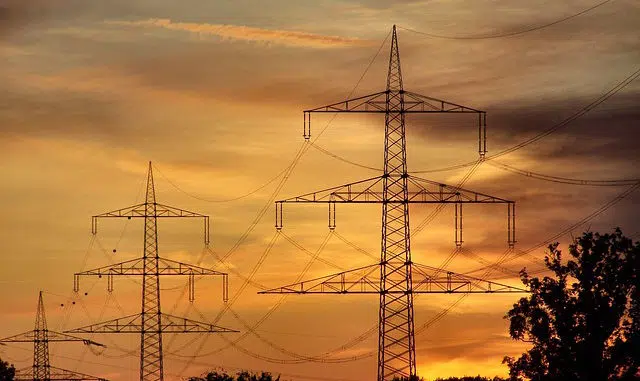California banning the sell of gasoline powered vehicles as of 2035 then almost immediately turning around and asking owners of electric vehicles not to charge them during peak hours due to the possibility of rolling blackouts has everyone talking electricity this week. The conversation begs the question. How reliable is our local electric grid?
MISO, (Mid Continent System Operator) is the federal agency that manages the transmission of electricity for 15 midwestern states including Illinois. It became the nation’s first FERC (Federal Energy Regulation Commission) approved Regional Transmission Organization (RTO) on December 20, 2001.
On its website MISO describes its role as a grid operator as, “to ensure the right amount of electricity is generated minute by minute and transmitted safely and reliably across the high-voltage transmission lines.” Local utilities, such as Ameren, deliver the electricity to their customers.
MISO defines an electrical grid as, “an interconnected network for delivering electricity from producers to consumers. It consists of generating stations that produce electrical power, high voltage transmission lines that deliver electricity to sub-stations, and distribution lines that deliver power to homes, schools and business.”
MISO describes their job as similar to air traffic controllers, “Air traffic controllers are responsible for ensuring planes get from point A to point B safely and reliably. MISO manages the movement of electrons across the bulk electric system.
On a video on the Ameren website for Ameren Illinois, Joe Solari, Vice President Customer Experience, says on days when high energy use is expected MISO may report that electricity generation available may not be able to meet the expanded demand for energy in our region.”
MISO may indicate that the electricity shortage could result in the need for temporary controlled power outages.” Solari states, “The risk for implementing controlled outages in our territory is very low.
What Solari doesn’t tell us in the video is what “very low” means. Is it 25%? Or is it something much less?
Solari continues, “In the event demand exceeds the available electric generation capacity, on very hot days for example, actions must be taken to ensure the electric grid remains stable. MISO may call for utilities, like Ameren Illinois, to reduce electric usage on our system during such days. If this occurs, we have plans in place to reduce electric demands from our industrial customers that will very likely cover the obligations for electricity reduction by MISO.”
Well that’s fine and dandy right? I won’t lose power at my house.
No! It’s not. What is the cost of such a brownout or blackout to the economy? How much money would businesses lose? Would workers get paid for those hours?
Solari continues, “This reliability plan minimizes power interruptions to residential customers, health care facilities and other critical customers. If conditions warrant, implementation of temporary residential interruptions will be confined to a small segment of our customer base. And the duration of each individual outage will likely be no longer than 90 minutes.
Well, isn’t that special?
What does “likely to be” no more than 90 minutes mean?
In the past I served on a national committee that wrote federal standards. We had a description for phrases and words that tell you absolutely nothing such as “very low,” small segment” and “likely to be.” We called them “weasel words.”
IBEW LOCAL 197 PRESSURES CYPRESS CREEK TO USE LOCAL WORKERS!
Interrupting power to consumers is known as shedding load. MISO says, “Load shed is always a last resort decision designed to protect the bulk electric system from collapsing and creating wide-spread blackouts. MISO’s responsibility is to identify the area where the electricity needs to be interrupted and the amount of electricity that needs to be cut.”
Local utilities like Ameren are responsible for individual load shed programs which take into account critical load identification.
Ameren admits in a fact sheet on their website, “… renewable generation is not filling the gap being left as fossil fuel plants close or plan to close. … these factors are driving power prices higher and increasing the risk for temporary power outages.”
This is a self inflicted wound folks. Why are we doing this to ourselves?





